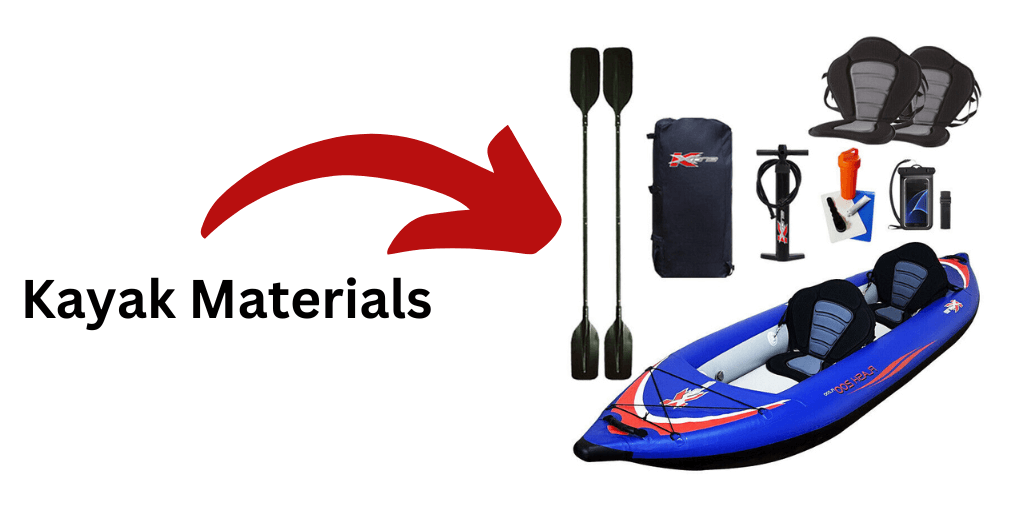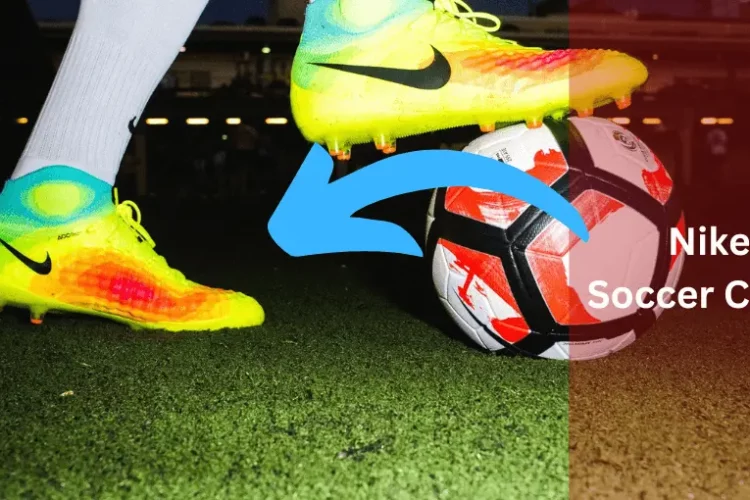Kayak Materials Guide: Plastic vs. Fiberglass vs. Composite
Are you ready for an exciting adventure into the world of kayaks? I’m your kayak buddy, here to share some exciting stories about the fantastic materials that make your kayaking adventures possible.

Today, I’ll dive into the fascinating topic of kayak materials. Kayaks are made from various materials that make them strong, light, and perfect for gliding through the water.
So, hop in, and let’s navigate through the wonders of kayak materials together!
- The Mighty Fiberglass: Ever wondered how a kayak can withstand the strong currents of a river or the salty waves of an ocean? One of the most common materials used in making kayaks is fiberglass. This material is super strong and durable, yet lightweight enough to make your kayaking experience smooth and enjoyable. It comes in vibrant colors that make your kayak stand out on the water!
- The Fantastic Plastic: Plastic may remind you of toys, but did you know that it’s also used to build kayaks? Kayaks made from plastic, often called polyethylene kayaks, are perfect for beginners. They are tough and can handle rough waters, bumps, and scratches without any fuss. These kayaks are like loyal companions who can accompany you on your kayaking adventures for a long time.
- The Light and Sle Carbon Fiber: If you’re a fan of speedy racers, then carbon fiber kayaks might catch your attention. Carbon fiber is a magical material used in some of the fastest and lightest kayaks out there. It’s like having wings on your kayak! It’s not only super strong, but it also helps reduce the weight of the kayak.
- The Classic Wood: Do you love nature and everything natural? Then you might enjoy the timeless beauty of wooden kayaks. While not as commonly used nowadays, wooden kayaks have a charm of their own. With carefully crafted designs and warm wooden tones, these kayaks bring a touch of tradition and elegance to the waters. It’s like paddling through history!
Importance of Choosing the Right Kayak Material
Are you ready to unlock the secret to an amazing kayaking experience? Well, it all starts with choosing the right kayak material!
Dr. Emily Waters a renowned marine biologist and avid kayaker, emphasizes the critical importance of selecting the right kayak material for an optimal paddling experience.
With her extensive background in marine sciences and a passion for water sports, Dr. Waters underscores how the choice of kayak material can significantly impact performance, durability, and enjoyment on the water.
Let’s have a look at why picking the proper kayak material is essential for thrilling water excursions!
Stay Safe and Sound
When it comes to kayaking, safety is super important. That’s why choosing the right kayak material matters!
Materials like plastic (called polyethylene) and fiberglass are great for making strong and durable kayaks.
They can handle bumps, rocks, and even rough waters. So, by picking a sturdy material, you’ll have a kayak that keeps you safe and sound throughout your adventures.
Light and Easy
Imagine dragging a heavy kayak or struggling to paddle through the water. That’s where the weight of your kayak material comes into play!
Lightweight materials like carbon fiber and fiberglass make your kayak much easier to carry and paddle. It’s like having a feather on the water, making your kayaking experience light and easy.
Fast and Agile
Do you love the thrill of speed and agility? Choosing the right kayak material can help you achieve that! Materials like carbon fiber are known for their fantastic speed and agility.
They make your kayak super fast and responsive, allowing you to zip through the waves like a pro. It’s all about feeling the wind in your hair and having a thrilling time on the water!
Versatility for Every Adventure
Are you planning to explore different types of water, like calm lakes, wild rivers, or even the open sea?
Choosing a versatile kayak material is key! Plastic and fiberglass are excellent choices because they can handle different environments.
They can tackle calm waters and even rowdy rapids with ease. It gives you the freedom to embark on any adventure you dream of.
Advantages and Disadvantages of Plastic Kayaks
Advantages of Plastic Kayaks:
- Affordability: Plastic kayaks are often more budget-friendly.
- Durability: They can withstand bumps and scrapes.
- Low Maintenance: Plastic kayaks are low-maintenance required
- Buoyancy: They tend to be more buoyant, making them stable on the water.
- Colorful Options: Plastic kayaks come in a variety of vibrant colors, allowing paddlers to choose a kayak that matches their style.
Disadvantages of Plastic Kayaks:
- Weight: Plastic kayaks can be heavier than other materials
- Less Speed: They may not be as fast as kayaks made from lighter materials like fiberglass
- Environmental Impact: The production of plastic kayaks can have environmental consequences
Advantages and Disadvantages of Fiberglass Kayaks
Advantages of Fiberglass Kayaks:
- Speedy Performance: Fiberglass kayaks are known for their lightweight construction, allowing them to move swiftly through the water.
- Durability: While not as rugged as plastic, fiberglass kayaks are still quite durable, making them suitable for various water conditions.
- Ease of Repair: Fiberglass is relatively easy to repair in case of damage, providing a longer lifespan for your kayak.
- Sleek Design: These kayaks often have a sleek and stylish design, appealing to paddlers who appreciate aesthetics.
- Versatility: Fiberglass kayaks are versatile, suitable for both beginners and experienced paddlers who want a balance of speed and durability.
Disadvantages of Fiberglass Kayaks:
- Cost: Fiberglass kayaks can be pricier compared to plastic, which may be a consideration for budget-conscious paddlers.
- Fragility: While durable, fiberglass kayaks are more susceptible to cracks and damage from impacts than some other materials.
- Weight: While lighter than plastic, fiberglass kayaks can still be heavier than some high-tech materials, making them less ideal for frequent portaging.
Advantages and Disadvantages of Composite Kayaks
Advantages of Composite Kayaks:
- Ultimate Performance: Composite kayaks are often designed for optimal performance
- Strength and Durability: They offer a high strength-to-weight ratio
- Customization Options: Composite materials allow for intricate designs and shapes
- Advanced Features: Many composite kayaks come equipped with advanced features
- Efficiency in Paddling: The materials used in composite kayaks can enhance paddling efficiencys
Disadvantages of Composite Kayaks:
- High Cost: Composite kayaks tend to be more expensive than kayaks made from other materialss
- Maintenance Sensitivity: They may require more careful maintenance to avoid damages
- Skill Level Requirement: Due to their high-performance nature, composite kayaks may be less forgiving for beginners
The Big Differences
When it comes to kayaks, did you know they can be made different materials? Each material has its own unique qualities and characteristics that can make a big difference in your kayaking experience. In this article, I’ll explore the big differences in kayak materials. So, let’s jump right in and discover what sets these materials apart!
- Weight:
- Plastic: Heavier but provides stability.
- Fiberglass: Lightweight for faster paddling.
- Composite: Balances strength and weight for efficiency.
- Durability:
- Plastic: Resilient to bumps and scratches.
- Fiberglass: Durable but more susceptible to impact damage.
- Composite: Offers high durability with a lighter feel.
- Cost:
- Plastic: Budget-friendly, great for beginners.
- Fiberglass: Moderate cost, providing a balance of performance and affordability.
- Composite: Higher cost, suitable for paddlers seeking top-tier performance.
- Performance:
- Plastic: Stable, ideal for casual paddling.
- Fiberglass: Swift and responsive, great for enthusiasts.
- Composite: High-performance, designed for speed and efficiency.
- Maintenance:
- Plastic: Low maintenance, easy to clean.
- Fiberglass: Requires minimal care, easy repairs if needed.
- Composite: Requires careful maintenance to preserve its condition.
Choose your kayak material based on your preferences, budget, and the type of kayaking adventures you have in mind!
How Materials Affect the Kayak’s Performance
Did you know that the material from which a kayak is made can greatly impact how it moves through the water?
Today, I’ll go into the exciting world of kayak materials and discover how they can make or break your kayaking experience. So, grab your paddles, and let’s embark on this thrilling journey together!
- Speedy Fiberglass: Consider your kayak to be a superhero dressed in a stylish suit. Fiberglass kayaks are like speed demons! They’re light and glide through the water fast. It makes you feel like you have your very own speedster kayak.
- Tough Plastic Defenders: Plastic kayaks are like armored superheroes. They’re durable, and they can handle bumps and knocks. It could be the perfect choice for adventurers who want a sturdy sidekick on their water quests.
- High-Tech Composite Wizards: Now, Your kayak as a magical wizard with a special wand. Composite kayaks are like the wizards of kayaks! They use high-tech materials that make them super strong and perfect for tricky waters.
Maintenance Tips: Keeping Your Kayak in Top Shape
Your kayak like a trusty that takes you on amazing adventures. To ensure it stays in top shape and ready for new journeys, proper maintenance is essential. Here are some helpful tips to keep your kayak in great condition:
Rinse
After every kayaking trip, rinse your kayak with fresh water. This helps remove any salt, sand, or debris that may have accumulated during your adventure. Use a hose or a bucket of water to give it a good rinse. Make sure to rinse the inside of the kayak too!
Dry
Allow your kayak to dry completely before storing it. This prevents mold and mildew from forming.
Find a shady spot or use a towel to wipe away excess moisture. If necessary, you can even turn your kayak upside down to ensure all the water drains out.
Storage
When storing your kayak, keep it away from direct sunlight and extreme weather conditions.
Ideally, it should be stored in a cool, dry place. If space allows, store it horizontally rather than vertically to prevent warping.
Inspect
Regularly inspect your kayak for any signs of damage, such as cracks, dents, or leaks. Pay close attention to areas with wear and tear, like the hull and edges.
It’s important to address any issues promptly to prevent further damage and ensure your safety on the water.
Protect
Consider using a kayak cover or storage bag to protect your kayak from UV rays, dust, and scratches when not in use. This will help extend its lifespan and keep it looking great.
Lubricate
If your kayak has moving parts, such as hinges, rudders, or pedals, apply a waterproof lubricant to keep them running smoothly. This helps prevent rust and ensures proper functionality.
Conclusion
A journey through the exciting world of kayaking! We’ve learned about different kayak materials, and why choosing the right one is crucial. We also learn maintenance tips to keep your kayak in top shape.
Whether you’re zooming through the water in a fiberglass speedster, cruising in a tough plastic explorer, or gliding with style in a composite superhero, remember that kayaking is all about fun and adventure.
So, grab your paddle, put on your life jacket, and set sail on your very own kayaking quests. Explore rivers, lakes, and beyond – there’s a whole world of watery wonders waiting for you!
Keep the spirit of adventure alive, and who knows, you might become the next kayaking superstar
FAQs
Kayaking is a water sport where you paddle a special boat called a kayak. It's like having a fun adventure on the water using your paddle!
Absolutely! You can go kayaking with your friends and make it a super fun group adventure. Just remember to stay together and look out for each other!
Kayaks are usually smaller and you sit inside them, while canoes are longer, and you sit on a raised seat. Both are cool for paddling adventures!
Wear comfy clothes and shoes that can get wet. If it's cold, a jacket and maybe a hat will keep you cozy. And don't forget your life jacket – it's super important!
Of course! Pack some yummy snacks in a waterproof bag and enjoy them during a break. Just be sure not to litter – keep our waters clean!


